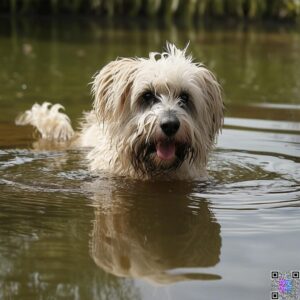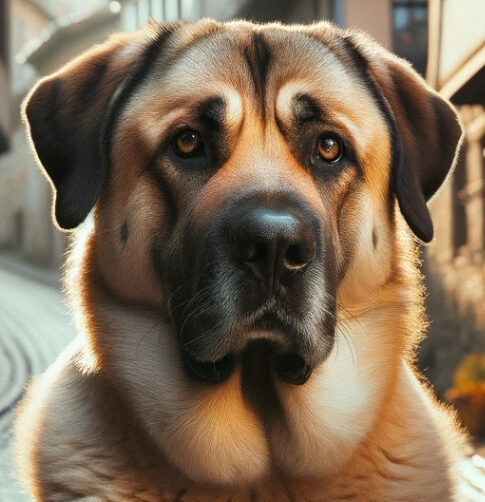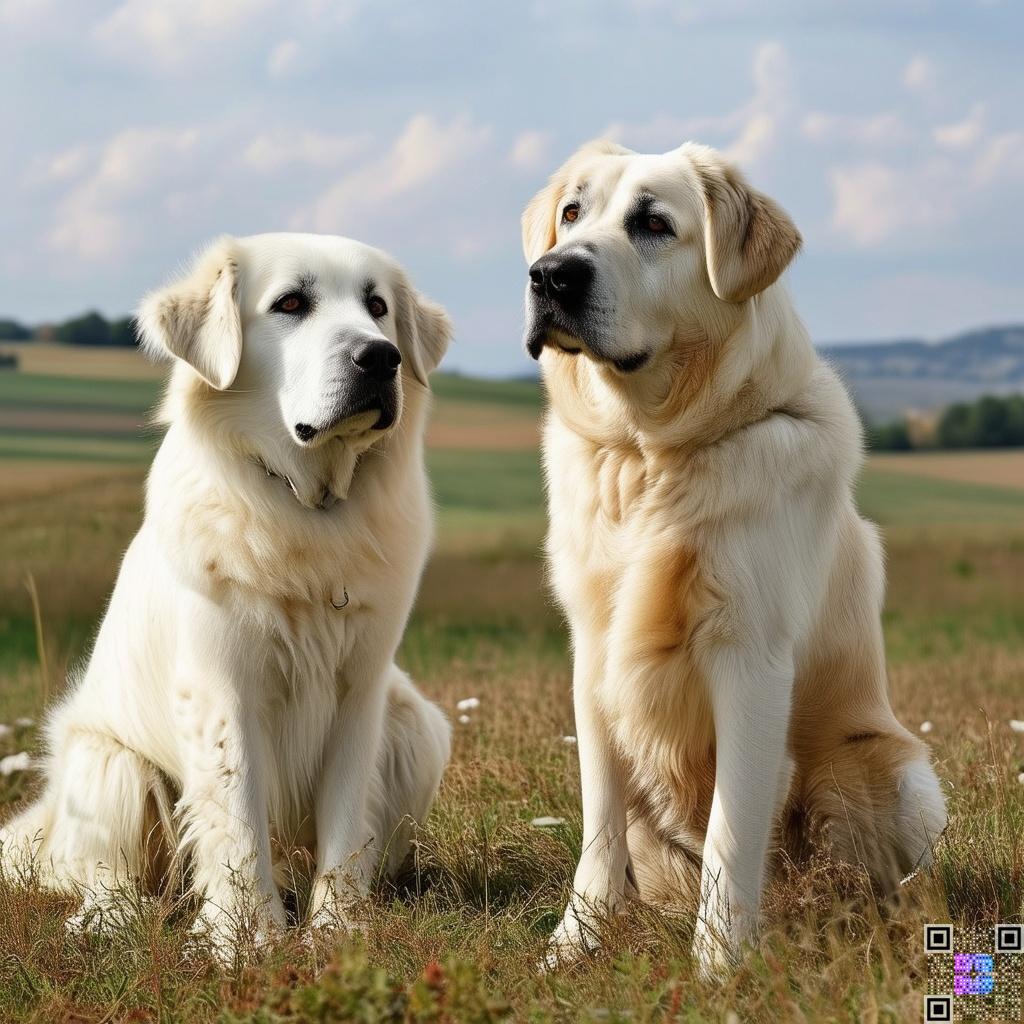✅ Introduction:
🐶 The Myth vs. The Reality: Owning an Anatolian Shepherd
In recent years, the Anatolian Shepherd has seen a surge in popularity across the globe. With their regal appearance, calm demeanor, and reputation as natural protectors, it’s easy to see why so many people are drawn to this majestic breed.
However, as interest grows, so does the spread of misconceptions. Many prospective owners fall in love with the idea of owning a loyal livestock guardian, but overlook the real challenges that come with this powerful and highly independent dog.
💡The Problem: Are You Truly Ready for a Guardian Breed?
Many people fall in love with the majestic appearance and legendary loyalty of the Anatolian Shepherd without fully understanding what ownership truly involves. Guardian breeds like the Anatolian are often misunderstood, and that misunderstanding leads to frustration, rehoming, or worse — behavioral issues that could have been prevented.
🤔 Misconceptions vs. Reality
Questions like “Is an Anatolian Shepherd dangerous?” or “Why doesn’t my Anatolian listen?” don’t stem from the dog’s temperament — they arise from a mismatch between the dog’s natural instincts and an owner’s expectations.
Anatolians aren’t dangerous by nature, but they are:
-
Territorial by instinct
-
Aloof with strangers
-
Hardwired to protect — even without a command
-
Uninterested in pleasing humans for praise
These traits, while desirable on a farm or working property, can become serious challenges in suburban environments without space, structure, or purpose.
🚫 When the Environment Doesn’t Match the Breed
Without proper leadership, environment, and social structure, Anatolian Shepherds can:
-
Ignore commands or appear “stubborn”
-
Become overly protective or reactive
-
Display territorial aggression toward guests or animals
-
Exhibit independent decision-making that conflicts with household rules
-
Challenge inexperienced owners who rely on basic obedience methods alone
⚠️ A Common But Costly Mistake
Many Anatolian Shepherds end up in shelters, rescues, or back with breeders not because they are “bad dogs,” but because owners didn’t realize what owning a guardian breed actually entails.
💡 The Real Takeaway
Owning an Anatolian Shepherd is not just about affection — it’s about responsibility. If you don’t provide:
-
Enough space
-
Daily structure
-
Consistent leadership
-
Social exposure from an early age
…then problems will arise — not from the dog’s flaws, but from unmet needs and misunderstood instincts.
🛑 Not Just Another Large Dog
Add to that the general large dog ownership difficulties, such as feeding costs, medical care, and housing needs, and it becomes clear that this isn’t a breed for everyone.

📘 In This Article, You’ll Learn:
-
The truth behind the myths about Anatolian Shepherds
-
Common problems and challenges new owners face
-
Why responsible ownership is critical for guardian dog breeds
-
How to decide if this breed truly fits your lifestyle
✅ Before you adopt, make sure you understand the reality—not just the myth—of living with an Anatolian Shepherd.
🚨 #1:🧭 They Are Incredibly Independent – Not Ideal for Obedience
One of the most misunderstood Anatolian Shepherd problems is their extreme independence. Many people expect a dog that responds like a Labrador or a German Shepherd—but Anatolians were bred for something entirely different.
🧠 What Does “Independent” Really Mean?
This isn’t about stubbornness or defiance. Anatolian Shepherds were developed as guardian dog breeds, raised to patrol livestock fields alone—often miles away from their human handlers. That means they were bred to:
-
Make decisions without supervision
-
Respond to threats instinctively, not by waiting for commands
-
Think for themselves, not follow orders blindly
In other words, they’re doing their job—even when you don’t like how they’re doing it.
👨⚖️ Lack of Obedience ≠ Lack of Intelligence
Many first-time owners ask: “Is an Anatolian Shepherd dangerous or disobedient?” The truth is, these dogs are incredibly smart—but they don’t aim to please. Their intelligence lies in problem-solving and self-direction, not in seeking approval.
This can frustrate owners expecting a traditional obedience-based relationship. Anatolians often:
-
Ignore repetitive commands they consider unnecessary
-
Resist recall if they perceive a higher priority (e.g., guarding a threat)
-
React based on instinct, not instruction
⚠️ Real-World Scenarios You Might Face
-
Your Anatolian refuses to come when called, even in open fields
-
They may ignore you entirely during moments they believe require protection
-
Commands like “leave it” or “stay” may be overridden by their protective instincts
📌 Training Tips (And Why They’re Not Foolproof)
While training is absolutely necessary, standard methods don’t always work. Here’s what may help—though results vary:
✅ Consistency is essential
✅ Positive reinforcement works better than punishment
✅ Establishing firm but respectful leadership can help (avoid “alpha” myths that rely on force)
🚫 Don’t expect robotic obedience
🚫 Don’t rely on recall off-leash in unsafe areas
🐕🦺 Bottom line: This breed requires a handler who respects independence while still setting firm boundaries—a difficult balance for inexperienced owners.
🛡️ #2:🐺 Natural Guarding Instincts Can Become Aggression
One of the most challenging aspects of owning an Anatolian Shepherd is managing their powerful guardian instincts. While their protective nature is part of what makes them so appealing, it can also become a liability—especially in the wrong environment.
🧬 Genetics Behind the Instinct
Anatolian Shepherds were specifically bred to guard livestock against predators like wolves, jackals, and human intruders. This instinct to defend their territory—without needing a command—is hardwired into their DNA.
🔑 In rural or farm settings, this is a strength.
⚠️ In urban or suburban environments, it can quickly become a problem.
When not properly socialized, Anatolians may view everything unfamiliar as a threat—including friends, neighbors, delivery workers, or even visiting relatives.
❗ This is one of the most misunderstood Anatolian Shepherd problems and a common reason for rehoming.
🚷 Guarding Can Turn Into Overprotection
An Anatolian’s sense of what needs “guarding” isn’t limited to people. They may instinctively protect:
-
Your home and yard
-
Food bowls, toys, or resting spots
-
Even you, from what they perceive as a threat—including friendly guests
Without clear boundaries and proper exposure, this behavior can escalate into aggression. Some Anatolians have been known to:
-
Bark excessively at visitors or passersby
-
Growl or snap at children who approach their toys
-
Charge or nip at unfamiliar pets or guests
💡 Warning Signs You Might Miss
These red flags can seem minor—until they’re not:
😠 Intense staring at strangers (a sign of dominance or concern)
🚪 Blocking doors to prevent guests from entering or leaving
🐕 Growling during routine interactions, like someone approaching their food or sleeping area
These are not quirks—they’re early signs of overprotective or aggressive behavior.
🧯 Prevention & Management
To prevent these behaviors from developing or worsening, it’s crucial to:
✅ Socialize early and often – Start during puppyhood and continue throughout adulthood
✅ Provide controlled exposure to people, pets, and environments
✅ Use desensitization training and positive reinforcement
✅ Set and enforce clear boundaries in the home
🐾 A well-socialized Anatolian Shepherd can be calm, confident, and discerning—able to tell the difference between a threat and a guest.
🏃 #3️⃣ Anatolians Need Tons of Space & Exercise
Anatolian Shepherds aren’t your typical house pets—they are working dogs with huge spatial and exercise needs. If you’re considering this breed for a city apartment or small backyard, think again.
🌄 Not Meant for Apartment Living
This breed was developed to roam and patrol vast open lands, sometimes covering several miles a day alongside livestock. Their natural environment is:
-
Farms and ranches 🐄
-
Acreage properties 🌾
-
Remote, rural landscapes 🏞️
🏙️ City life and tight spaces frustrate them—leading to anxiety, restlessness, and behavioral issues.
🔑 This is a common oversight in large dog ownership difficulties—space isn’t optional for Anatolians, it’s essential.
🕒 Exercise Requirements
An Anatolian Shepherd requires much more than a casual walk around the block.
-
At least 2 hours of daily exercise is recommended
-
This should include purposeful movement—not just leash walking, but:
-
Free roaming in a secure yard
-
Hiking or running with their owner
-
Structured playtime or work tasks
-
🧩 Mental enrichment is equally vital. These dogs thrive when given a job, whether it’s guarding, scent work, or interactive puzzle toys.
🛋️ Consequences of Exercise Neglect
Without proper space and exercise, Anatolian Shepherds can develop serious behavior problems:
-
🔨 Destructive habits like chewing, digging, or tearing up furniture
-
🧱 Escape attempts—they’re known to scale or break through 6-foot fences if bored or under-stimulated
-
😠 Increased reactivity or aggression from pent-up frustration
🚨 Boredom is dangerous in large guardian dog breeds. If you can’t meet their physical and mental needs, this isn’t the breed for you.
📊 Table: Exercise Needs Comparison
| Breed | Exercise Needs | Suitable For Apartments? | Energy Level |
|---|---|---|---|
| Anatolian Shepherd | Very High | ❌ No | 🔥🔥🔥 |
| Golden Retriever | Moderate | ✅ Yes | 🔥🔥 |
| Great Dane | Low to Medium | ✅ Yes | 🔥🔥 |
🤯 #4:4️⃣ They Are Not “Just Big Dogs” – They’re Primitive
One of the biggest misconceptions about Anatolian Shepherds is thinking they’re simply large, fluffy pets. In reality, they are a primitive breed, with instincts and behaviors far closer to wild canines than most modern domestic dogs.
🦴 What Makes Them a “Primitive Breed”?
Anatolians are one of the oldest dog breeds in the world—developed thousands of years ago to survive in harsh, remote environments without direct human guidance.
-
🔹 Behaviorally closer to wild dogs than typical companion breeds
-
🔹 Operate on instinct over obedience
-
🔹 Often aloof, independent, and wary of strangers
-
🔹 Not driven to please like Labradors or Golden Retrievers
❗ This isn’t disobedience—it’s survival-based intelligence.
🧬 Hardwired to Be Self-Sufficient
Anatolian Shepherds were bred to work alone, independently guarding livestock in isolated terrains.
-
🔒 Can survive on their own without daily direction or human bonding
-
🐾 May roam for miles if not properly contained—some even scale high fences
-
🧭 Naturally take charge of their environment and don’t wait for commands
🚫 Not Suited for First-Time Owners
This is not a beginner’s breed. Without strong, confident leadership, Anatolians will assume the role of alpha and become increasingly hard to manage.
-
Require a calm, consistent, and experienced owner
-
Owners must set boundaries early—and enforce them fairly
-
Without firm guidance, they’ll challenge your authority regularly
🧠 Owning an Anatolian means being respected—not just liked—by your dog.
🚧 Socialization Is NOT Optional
Primitive breeds like the Anatolian do not adapt easily without early exposure to new stimuli.
-
🐶 Must be socialized with hundreds of people, animals, and environments between 8 and 16 weeks of age
-
🕒 After 6 months, new experiences can provoke fear or aggression
-
Poorly socialized Anatolians may become dangerously territorial in adulthood
🛑 Skipping this step is one of the most common—and serious—Anatolian Shepherd problems.
🧠 #5: Training Is a Lifelong Struggle
🧨 Not a “Train It Once” Breed
- Constant reinforcement needed
- May forget or ignore commands over time
📚 Training Timeline (Generalized)
| Age | Focus | Difficulty Level |
|---|---|---|
| 8–12 weeks | Basic commands, leash intro | 🟢 Easy |
| 3–6 months | Socializing, recall | 🟡 Medium |
| 6–12 months | Boundary setting, impulse control | 🔴 Hard |
| 1–3 years | Reinforcement, advanced obedience | 🔴 Very Hard |
❗🚫 Common Mistakes When Raising an Anatolian Shepherd
Anatolian Shepherds are intelligent and capable, but they are not easy to train like typical obedience breeds. Missteps during their upbringing can lead to behavioral problems, disobedience, or even aggression.
Here are some of the most common mistakes new owners make:
❌ Using Harsh Punishment
Anatolians are highly sensitive and do not respond well to force-based training. Harsh corrections or dominance tactics can lead to fear, defiance, or mistrust.
-
Use positive reinforcement instead
-
Focus on respect and trust, not submission
-
Harsh methods may make them shut down or react aggressively
🔑 Remember: They’re primitive thinkers—not robots for commands.
❌ Inconsistent Commands
Inconsistency confuses any dog—but with Anatolians, it leads to willful noncompliance. They need clear rules and consistent expectations.
-
Everyone in the household should use the same cues and rules
-
Avoid changing boundaries—they remember everything
-
Inconsistency = lost credibility with your dog
🧠 Once they stop trusting your leadership, it’s hard to regain.
❌ Expecting Quick Results
This breed is not built for speed-learning. Training an Anatolian takes time, repetition, and patience.
-
They will question your decisions
-
Obedience is earned—not automatic
-
Results may take weeks or months, not days
⏳ Expecting fast progress is one of the biggest guardian dog breed challenges.
🐕 #6: Dangerous Around Other Pets & Strangers
🐾 Guarding = Aggression
- They may view cats, dogs, kids as threats
- Highly protective toward primary caregiver
💥 Real Dangers
- Lunging at joggers or cyclists 🚴
- Fighting with other dogs 🐕🐶
- Snapping at visiting children
📉 Risk Factors
| Risk Factor | Threat Level 🔺 | Mitigation Needed |
|---|---|---|
| New visitors | High | Controlled intro |
| Small pets (cats etc) | Very High | Separate zones |
| Busy neighborhoods | Extreme | Not recommended |
💰 #7:💰 The True Cost of Owning an Anatolian Shepherd
Owning an Anatolian Shepherd is a long-term commitment—not just in time and energy, but in finances too. These large, working dogs have specific needs that can make them costlier to raise and maintain than the average family pet.
💸 Beyond the Purchase Price
Buying an Anatolian Shepherd puppy is just the beginning.
-
🐶 Puppy Cost: $1,000 to $2,500 depending on breeder reputation, lineage, and location
-
📅 Monthly Maintenance: $200–$400 (including food, grooming, training, and vet care)
-
🛠️ Fencing & Security: Strong fences are a must; escape-proofing your yard may add extra cost
⚠️ Many underestimate the total cost of a large, guardian dog breed.
🏥 Health-Related Expenses
While Anatolians are generally hardy, they are prone to certain expensive health conditions:
-
🦴 Hip Dysplasia: Surgery can cost $1,500–$4,000
-
👁️ Entropion (eyelid disorder): Requires corrective surgery
-
⚠️ Bloat (Gastric Torsion): A life-threatening emergency—treatment costs can exceed $3,000
🩺 Regular vet check-ups and preventative care are essential to catch issues early.
🥩 Food & Nutrition Costs
These dogs are massive, and their calorie needs are too.
-
🍗 Daily Caloric Needs: 3,000 to 4,000 calories
-
🥩 Recommended Diet: High-quality raw food or premium grain-free kibble
-
💵 Monthly Food Cost: $100–$250 depending on brand and diet type
🐾 Skimping on nutrition can shorten their lifespan or worsen health conditions.
📑 Table: Monthly Ownership Cost Breakdown
| Expense Type | Monthly Cost (Est.) | Notes |
|---|---|---|
| Food | $150–$250 | Premium large-breed food |
| Vet care | $50–$100 | Routine & emergency visits |
| Training | $30–$100 | Ongoing classes/tools |
| Insurance | $30–$60 | Recommended |
🧾 Final Verdict: Should You Really Own One?
✔️ Great For:
- Experienced handlers
- Rural landowners
- Livestock protection
❌ Not Ideal For:
- Apartment dwellers
- Families with young children
- First-time dog owners
🧠 Final Thought
Owning an Anatolian Shepherd is a lifestyle decision, not just a pet purchase. If you’re not ready to meet their needs, this breed could become your worst regret instead of your best companion.

Anatolian Shepherds may seem like loyal, majestic guardians at first glance, but beneath their noble exterior lies a complex, demanding breed that isn’t suitable for everyone. Known for their strong independence, these dogs often choose to think for themselves rather than follow commands, making them difficult to train for inexperienced owners. Their intense guarding instincts can quickly turn into aggressive behavior if they’re not properly socialized or challenged mentally. Living with an Anatolian in a small space is a disaster waiting to happen—they need acres to roam and a job to do, not just a backyard. Their ancient, primitive traits mean they often resist change and struggle with modern domestic routines, requiring lifelong training and strong leadership. They also aren’t the best with other pets or strangers, as their protective instincts can easily turn territorial. Add to that the high costs of food, training, and vet care—especially with common large-breed health issues—and you’ll quickly realize that owning one isn’t just a commitment, it’s a lifestyle shift. If you’re not prepared for the reality of constant structure, space, and financial responsibility, this breed could quickly become more of a burden than a blessing.
❓ Frequently Asked Questions (FAQs)
❓ Are Anatolian Shepherds dangerous to kids?
👉 Yes, if not socialized early or properly trained. Their guarding instincts can confuse play with aggression.
❓ Can Anatolian Shepherds live in apartments?
👉 No, they need space and become frustrated in confined environments.
❓ Do Anatolian Shepherds get along with other dogs?
👉 Not naturally. With training and early socialization, it’s possible—but challenging.
❓ What are the biggest cons of owning an Anatolian Shepherd?
👉 Independence, aggression risk, intense exercise needs, and high training difficulty.
❓ Can I train an Anatolian Shepherd as a first-time dog owner?
👉 It’s not recommended. These dogs require an experienced and consistent handler.
🏁 Conclusion: Think Before You Adopt
Adopting an Anatolian Shepherd without full understanding is a common mistake that leads to rehoming or worse. While they’re majestic and powerful, they come with serious responsibilities and challenges. Know what you’re signing up for — or risk regretting it later.

